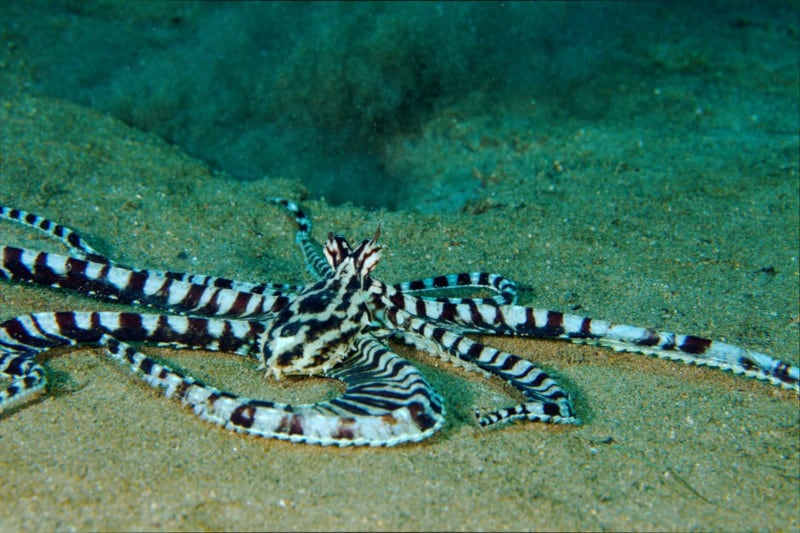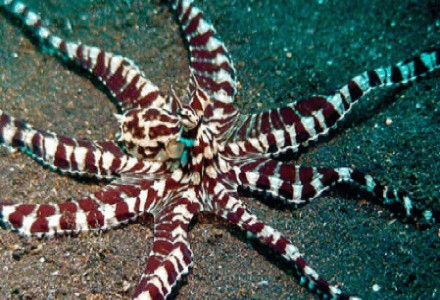
Mimic Octopus Facts
- Firstly, the fabulous Mimic Octopus, Thaumoctopus mimicus, is a unique species of octopus. This astonishing species has an incredible capacity for impersonating other ocean animals.
- What also makes this animal different from its relatives is its particular skill. That’s because it has a unique ability. It can take the shape of not only objects, such as coral and rock, but also some animals.
- Further separating itself from related species, the animal appears to still have a stable population. Therefore, the IUCN currently lists this remarkable cephalopod as a Species of Least Concern.
Related Articles
Coconut Octopus Blanket Octopus Flapjack Octopus
Mimic Octopus Physical Description
Most notably, the mesmerizing Mimic Octopus grows much smaller than many related species. As a result, it only reaches an average length of about 23.5 in (60 cm). But, it does not rely on size to be impressive.
Further, its distinctive tentacles only grow to a modest length. Most commonly, these only achieve a measurement of about 25 in (63.5 cm). In addition, these usually have a diameter about the same as a pencil at the widest.
Also, the natural color of the animal typically appears a light brown or beige. However, it usually presents a more noticeable pattern of striped white and brown. This it does to scare off predators by appearing to be poisonous.
- Kingdom: Animalia
- Phylum: Mollusca
- Class: Cephalopoda
- Order: Octopoda
- Family: Octopodidae
- Genus: Thaumoctopus
- Species: T. thaumoctopus
Mimic Octopus Distribution, Habitat, and Ecology
The wonderful Mimic Octopus appears to inhabit a moderately extensive range that includes Indo-Pacific region. This range extends from the Great Barrier Reef, to the Philippines, to the Red Sea and New Caledonia.
However, the first individual, found in 1998, lived near Sulawesi, in Indonesia, in Asia. Like others subsequently found, it lived in shallow, sandy, and silty regions. In addition, most live at depths of no more 49 ft (15 m).
It also hunts as both a forager and a hunter. Due to this, its prey remains quite varied. On occasion, individuals hunt various small fish to consume. Yet, at other times, it will forage in crevices and coral for small crustaceans.
Species Sharing Its Range
Blue Shark Sea Spider Irrawaddy Dolphin
Check out our other articles on 6 Extremely Localized Invertebrates, Puffin, Onyx River, Vietnamese Mossy Frog, Rainbow Eucalyptus, Gambian Spotted-Eye Flower Mantis

